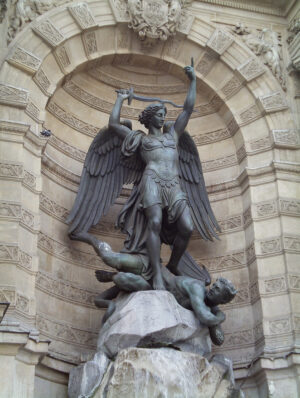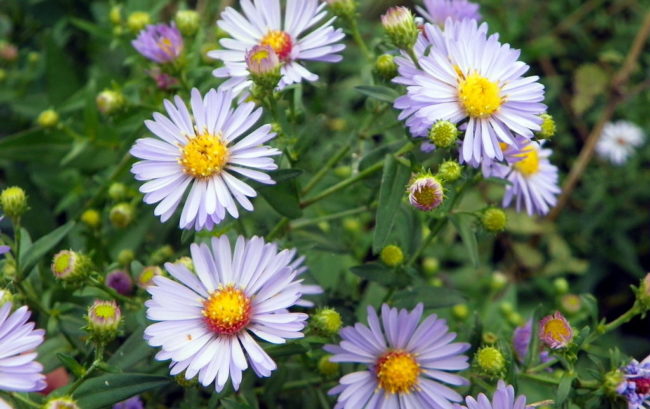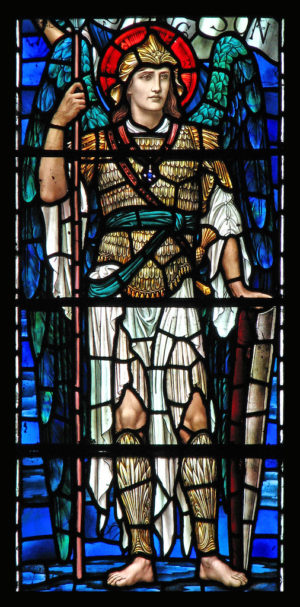“Eat a goose on Michaelmas Day, Want not for money all the year.”
Popular wisdom associated with Michaelmas
FRIDAY, SEPTEMBER 29: Try roasting a goose today, to honor one of the most popular Christian feasts: Michaelmas. Beyond honoring St. Michael the Archangel, Michaelmas has taken on a seasonal association through the centuries, signaling the beginning of autumn. In the United Kingdom and Ireland, “Michaelmas” is the name of the first term of the academic year, while in Wales and England, “Michaelmas” is associated with one of four terms of the year in the courts. Michaelmas fairs have been conducted for hundreds of years.
For the faithful, autumn ushers in the darker half of the year, and St. Michael is an angelic warrior, prayerfully invoked by the faithful for extra protection.
MICHAEL HONORED IN ABRAHAMIC FAITHS
Christianity is split on how to regard “Archangels,” but generally seven are recognized in Christian tradition—and three of them are honored liturgically. Among these, St. Michael is the seen as the greatest of all the Archangels. Hebrew for “Who is like God,” Michael carried the victory over Lucifer in the war of heaven. Michael appears several times in the Hebrew scriptures and generally is seen as an advocate of Israel. Michael also is honored in Islam for his role in carrying out God’s plans.
Often depicted as a white-robed angel with his foot on a demon, St. Michael is the warrior of God. Not surprisingly, the Archangel has become the patron of soldiers, mariners and anyone going into battle. Several divine appearances are credited to St. Michael, including one reported by St. Joan of Arc.
The Golden Legend describes in great detail the battles of St. Michael, but none are to be as great as his final victory over the Antichrist. According to the Golden Legend, the Archangel Michael will slay the Antichrist on the Mount of Olivet.
MICHAELMAS CUSTOMS: A DAISY, A GOOSE AND A BANNOCK
As the Aster blooms around this time each year, it has slowly gained a new name: the Michaelmas Daisy. In every color from white to pink to purple, the Michaelmas Daisy is the original flower from which lovers pick petals and alternately chant, “S/he loves me, S/he loves me not.” Gardens in England and the United Kingdom still attract throngs of visitors around Michaelmas for their glorious displays of Michaelmas daisies.
Geese were once plentiful on Michaelmas—as were autumn apples—and the most popular dish of Michaelmas has always been roast goose and apples. Side dishes and desserts vary by country, with the Irish making Michaelmas Pie and Scots baking St. Michael’s Bannock, a type of scone. (Get recipes and more from Catholic Culture and FishEaters.) Legend known across the UK tells that blackberries should not be picked after this feast day, and therefore, dishes containing blackberries are also popular on the Michaelmas table.



